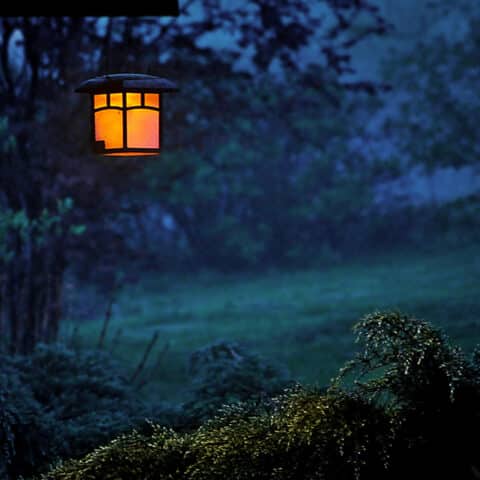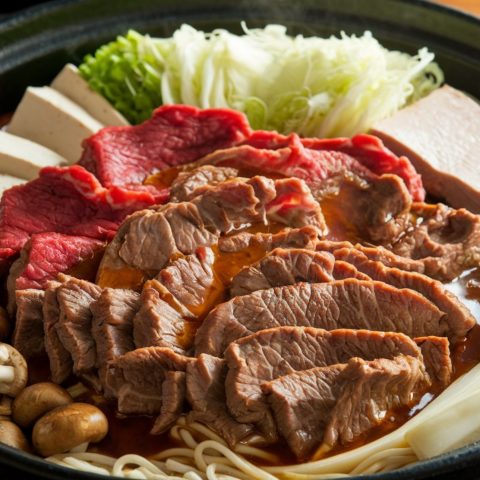
Even if you aren’t totally sure about where it’s located, you’ve surely heard of Miyajima Island. It’s one of the most famous, picturesque, must-see destinations in Japan. One of Hiroshima Prefecture’s most acclaimed attractions, it’s a beautiful place to immerse yourself in nature and long-storied Japanese culture, hike up Mt. Misen, eat some momiji-manju (a local Hiroshima snack), and visit the many shrines once you step off the ferry from Miyajima-guchi Station. Let’s take a dive into what Miyajima has to offer!

Itsukushima Shrine during low tide – Photo by Juliana Barquero at Unsplash
Itsukushima Shrine
Itsukushima Shrine (厳島神社) is by far the most famous shrine on the island, known for how it seems to float in the bay water. This UNESCO World Heritage Site boasts one of the most iconic sights in Japan: At over 16 meters, the torii gate makes a great photo opportunity once high tide rolls in. However, when the water subsides later in the day, you can see the water level isn’t so deep. By evening, it’s shallow enough that people can actually walk up to it for a unique view of either the shrine or the city of Hiroshima.

View of the famous Torii Gate of Miyajima – Photo Credit: Jessica Iragne at Arigato Travel
That’s not to say the shrine itself doesn’t have sights to see, as you can experience the shrine’s atmosphere and see Shinto priests go about their duties, giving a glimpse into this unique aspect of Japan’s culture. And while you’re wandering the shrine area listening to ancient chanting and marveling at the shrine’s architecture, take note of the local deer in the area.
Google Maps: Itsukushima Shrine
Itsukushima Shrine official site (English): https://www.itsukushimajinja.jp/en/admission.html
Hours of operation: 6:30 am to 5:00 pm daily
Admission fee: 300 yen (adult)

Deer wander the grounds on Miyajima Island – Photo Credit: Jessica Iragne at Arigato Travel
Meet the wild deer
The whole of Miyajima is filled with deer, but the ones that guests can get close to are harmless, having their horns sawn off, and have grown used to people in the area. While the wild deer deep in the mountains tend to avoid people, the ones near Itsukushima shrine are known as “shinroku” (神鹿) or “deer raised near the shrine” and should be treated with respect. In the Shinto beliefs, deer are seen as divine messengers of the gods, which is why they’re allowed to roam freely near the shrine. The deer can be seen year-round, and as soon as you leave the ferry terminal area and walk further into the island’s famous outdoor attractions, you can enjoy taking photos of them.

At the top of Mt Misen – Photo Credit: Sebastian Stulz on Unsplash
Mt. Misen
While you’re enjoying the sights of the temples by the shore, more await you near the top of Mt. Misen (弥山), where you take the ropeway up the mountain to gain access to more shrines. You’ll ride the Miyajima Ropeway up the mountain to Shishiiwa Station and observatory, where you can rest a bit and grab a bite. From there, you can take your time visiting the many spots on the paths up to the Mt Misen Summit, such as Reikado Hall and Miyajima Shrine.
Once you make it up to the summit, you’ll have earned a full panoramic view of Hiroshima Bay and the islands neighboring it from the observatory. Enjoy the cool breeze and fresh air atop the mountain while you rest up and soak in the natural beauty of the lush greenery and calm bay.
Google Maps: Mt. Misen
Miyajima Ropeway official site (English): https://miyajima-ropeway.info/english/
Hours of operation: 9:00 am to 4:00 pm daily
Admission fee: 2,000 yen (adult round-trip)

Enjoy a walk under the red maple leaves in fall – Photo Credit: TOMOKO UJI at Unsplash
Momijidani Park
Behind Itsukushima Shrine and at the foot of Mt. Misen is Momijidani Park (紅葉谷公園), meaning “Autumn Leaves Valley Park,” which sums up what this place is known best for. The maple leaves turn a stunning red in the fall season, complemented by the evergreen trees that cover the mountains surrounding the park. With the Momijidani River and waterfall adding more serenity to this beautiful scenery, it’s no wonder this park is such a popular destination for nature lovers who want to relax. The park does have cherry blossoms in springtime, and deer can be seen at this park year-round as well. And, if you’re coming from or going to Mt. Misen, there is also a free shuttle bus from the park’s entrance to Ropeway Momijidani Station.
Google Maps: Momijidani Park
Momijidani Park on the official guide to Hiroshima (English): https://dive-hiroshima.com/en/explore/1452/
Hours of operation: Open 24 hours
Admission fee: free

Many shops line Omote-sando Street – Photo Credit: Jessica Iragne at Arigato Travel
Miyajima Omote-sando Shopping Street
Whether you want to sample the taste of Miyajima as soon as you get off the ferry or after a trip around the island, you can’t go wrong with the food selections available at Miyajima Omote-sando Shopping Street. From local staples like Hiroshima okonomiyaki (think of a cooked pancake stuffed with various ingredients like chopped vegetables, meat, seafood, or local delicacies) or age-momiji (a sweet snack shaped like a maple leaf, usually filled with red bean paste and then deep fried). Many kiosks and restaurants there can cater to a wide variety of tastes for guests looking to sit down and enjoy the food Miyajima has to offer.
Google Maps: Omote-sando Shopping Street
Omote-sando Shopping Street on the official guide to Hiroshima (English): https://dive-hiroshima.com/en/explore/384/
Hours of operation: Most shops open by 10:00 am and close by 5:00 pm daily

Miyajima oysters – Photo Credit: Jessica Iragne at Arigato Travel
One special local delicacy that everyone should try is the oysters of Miyajima. Hiroshima Bay provides an ideal location for oysters, which is what Hiroshima is famous for, and this is shown thanks to how sweet they taste. You can also try other oyster varieties, such as oyster curry bread (which is curry and dough baked with oyster inside) or the more common “kakifurai” (カキフライ), which is oyster wrapped in deep-fried batter. There are also raw oysters for those feeling up for it, as well as oysters served with rice and local sake. Whatever your tastes are, you’ll be sure to find something in Miyajima that you can savor.

Miyajima oysters – Photo Credit: Jessica Iragne at Arigato Travel
Miyajima Brewery
If you’re in the mood to unwind with a few drinks, why not drop by Miyajima’s local brewery, which is located not too far from Omote-sando Shopping Street? Here, you can sample the local craft beer, either on tap or you can bring some of it back as a souvenir. On the Miyajima Brewery’s first floor, you can sample its choices of beer, from all types of lagers, ales, and weizen (“wheat” in German) beer. On the third floor restaurant, not only do you get a great shot of the torii gate with the bay and mountains as its backdrop, but you can enjoy more Miyajima specialties along with the view.
Google Map: Miyajima Brewery
Hours of operation: 10:30 am to 5:00 pm daily

Delight in the aesthetics of the ryokan experience – Photo Credit: Filiz Elaerts on Unsplash
Stay a night at a Miyajima Ryokan
If you plan to spend a night in Miyajima, there are plenty of ryokan (旅館), or traditional Japanese-style hotels, to stay at not too far from the Miyajima ferry terminal. While some of these ryokan may look like Western-style hotels at first, once you step in your room, you’ll see it laid out with tatami mats and sliding doors, with meals being brought to your room and guests having the option to change into yukata clothing once they check-in. Try a night at the more famous ones like the Grand Hotel Arimoto or Iwaso Ryokan, where guests can have a private onsen bath attached to their rooms. Other ryokans also offer big Western-style beds if you don’t want to sleep on the floor, such as Aki Miyajima and Kiyomori. Either way, you’ll enjoy Japanese hospitality and traditions as you immerse yourself in the charm of Miyajima.
Miyajima Island offers guests a day (or two!) filled with experiences you won’t find anywhere else in Japan, literally, since it’s one of Japan’s three great scenic sights (“Nihon-Sankei”), where the people of Japan have designated it as one of the most beautiful places Japan has to offer. With the floating torii gate of Itsukushima Shrine, the view from atop Mt. Misen, and the stunning colors of Momijidani Park in autumn, it’s no wonder Miyajima stands out so prominently. Top it off with great oysters, local craft beer, and the ryokan experience, and Miyajima is a must-see for those who want more out of their time in Japan. If you’re looking for an adventure outside of the big city, come visit Miyajima, and you won’t be disappointed.
Featured Photo Credit: Jessica Iragne
Interested in visiting Miyajima but not sure how? Book a Personal Travel Consulting Call with our experts and make sure to mention it!




